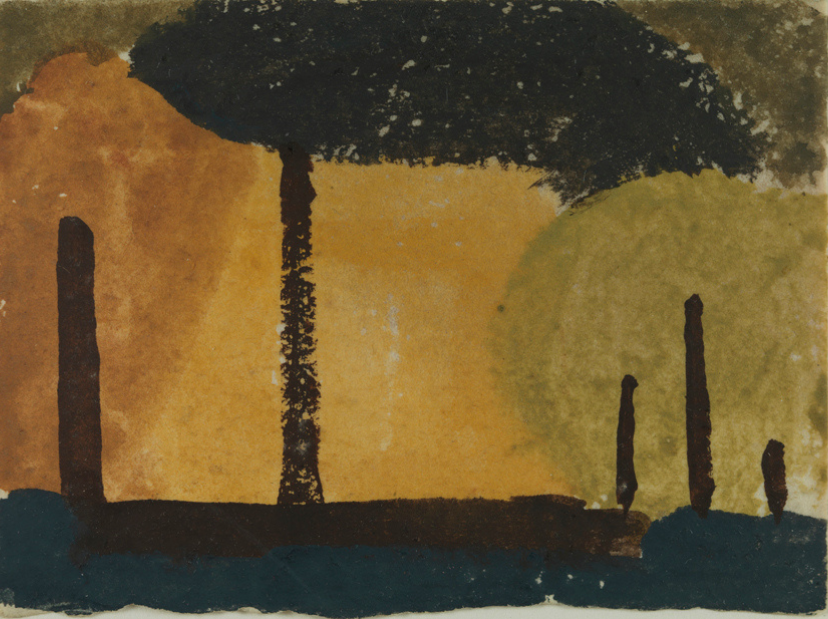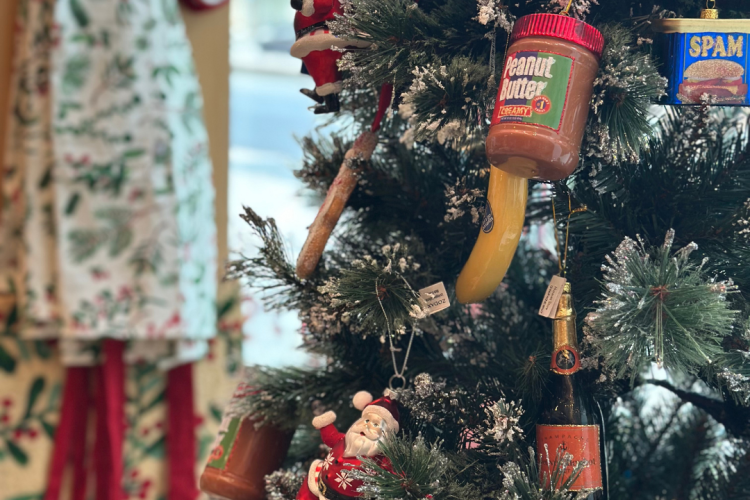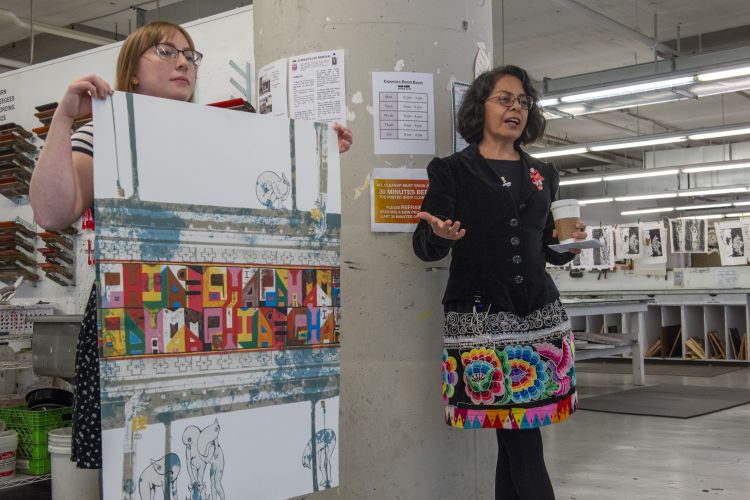STORIES FROM PAFA
“I look at nature, I see myself”: The Abstract Vision of Arthur Dove
Of all the American artists inspired by nature, perhaps Arthur Dove provides us with the most intimate, visceral and modern translation of the elements of the environment around him. While the world Dove inhabited early in his career was increasingly industrialized, Dove consistently turned toward the forms, colors and even sounds and sensations of nature for his work.
“I look at nature, I see myself.” -Arthur Dove
Dove was born in 1880 in Canandaigua New York, surrounded by rolling hills and open landscapes. A family friend introduced him to fishing, hunting, and camping, instilling in young Arthur a love of nature that would shape his life and define his career as an artist. Of his childhood Dove said, “I can claim no background except perhaps the woods, running streams, hunting, fishing, camping, the sky.” At his parents’ insistence, he attended Cornell and studied law, with any extra time or course credits taken up by art classes. After graduating, he was able to land a job as an illustrator in New York, which pleased his parents, but after spending time in Paris between 1907 and 1909, he soon abandoned illustration to devote himself to painting.
 |  |
(Left) [Landscape], Ca. 1941–1946. Wax emulsion on white watercolor paper, 3 x 4 in. Pennsylvania Academy of the Fine Arts, Gift of Mr. and Mrs. William Dove, 1985.55.9. © artist or artist's estate. (Right) [Abstract composition – Landscape?] recto; [Abstract composition] verso. Ca. 1941–1946. Wax emulsion on cream watercolor paper, 3 x 4 in. Pennsylvania Academy of the Fine Arts, Gift of Mr. and Mrs. William Dove, 1985.55.26. © artist or artist's estate.
Dove was influenced by Cezanne, Matisse and Picasso while in Paris and turned to nonrepresentational forms in his paintings to express the spiritual aspects of nature. He rejected any ideas of narrative, setting and even eschewed titling his works; he felt that “the forms should tell their own story.”
Dove is now widely regarded as the first American abstract artist. Dove called his abstract paintings “extractions” because he was striving to extract the essence of nature and express it through color and form in his work.
 |  |
(Left) [Abstract Composition - Fish Form?] ca. 1941–1946. Watercolor, gouache, and graphite on white watercolor paper, 3 x 4 in. (7.62 x 10.16 cm.). Pennsylvania Academy of the Fine Arts, Gift of Mr. and Mrs. William Dove, 1985.55.2 © artist or artist's estate. (Right) [Abstract Composition - Landscape?] ca. 1941–1946. Watercolor and gouache on cream watercolor paper, 2 15/16 x 4 in. (7.46 x 10.16 cm.). Pennsylvania Academy of the Fine Arts, Gift of Mr. and Mrs. William Dove, 1985.55.6 © artist or artist's estate.
These pieces, part of our permanent collection, were made in the later years of his life when he and his second wife Helen Torr, aka “Reds,” for her vivid red hair, were living in Centerport on Long Island. Dove and Torr had spent 7 years on a sailboat in LI Sound before settling in an old post office on the shore of Titus Mill Pond, a property they purchased for $980.00. Soon after moving in, Dove’s health began to fail. Torr, a talented modernist artist in her own right (Helen Torr was from the Roxbury section of Philadelphia, as it was then known, and won a scholarship to the Pennsylvania Academy of the Fine Arts, where she studied under William Merritt Chase) spent much of her time taking care of Dove, who continued to paint despite his deteriorating physical condition. The tiny house they lived in was just under 500 square feet, and must have been crowded with two artists living and working there. Still, surrounded by his beloved sun, water, wind and sand, Dove described their home to a friend as the “ideal setup.”

Ca. 1941–1946. Watercolor and gouache on off-white watercolor paper, 3 x 4 in. Pennsylvania Academy of the Fine Arts, Gift of Mr. and Mrs. William Dove, 1985.55.7. © artist or artist's estate.
While Dove would never see commercial success in his lifetime, even resorting at times to commercial fishing and farming to make money, this group of intimate “abstraction extractions” in our permanent collection provide evidence of one artist’s deep and enduring connection with nature and the environment.
Written by Ingrid Spangler, PAFA Staff
Sources:
- https://www.nga.gov/collection/artist-info.1241.html
- https://en.wikipedia.org/wiki/Arthur_Dove
- https://yalebooks.yale.edu/2021/06/04/arthur-dove-and-nature
- https://www.earthday.org/art-to-save-the-planet
Featured Image: Arthur Garfield Dove, [Landscape], ca. 1941–1946. Wax emulsion on white watercolor paper, 3 x 4 in. (7.62 x 10.16 cm). Pennsylvania Academy of the Fine Arts, Gift of Mr. and Mrs. William Dove, 1985.55.9. © artist or artist’s estate.
We're so excited you're planning to visit PAFA!
Make time for art — visit us Thursday to Sunday.
Before reserving your tickets, please review helpful information about museum hours, accessibility, building access, and special admission programs.
If you have any questions, feel free to reach out to us at visitorservices@pafa.org — we’d love to help!


